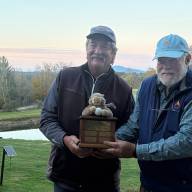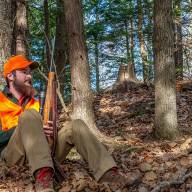The Mad River Valley Conservation Commissions, Warren, Waitsfield and Fayston, have been awarded a $100,000 grant to expand work to manage and control knotweed throughout The Valley’s watershed.
The Lake Champlain Basin grant for $100,000 grant has a $69,259 local match which will be raised by the local conservation commissions.
“The Tri-Town Knotweed team has been lucky enough to win this major grant, which is very much due to the continued focused efforts here in The Valley by the towns and their residents on controlling knotweed. This new grant will create an opportunity to expand our work by allowing us to ramp up things we have been doing like mapping, flood plain reforesting and community engagement, but also to begin work on treating contaminated gravel,” said Warren Conservation Commission chair Jito Coleman.
WORK TO DATE
Work to date has focused on specific areas in the three towns including Riverside Park and Quayl Bend in Warren, Farley Riverside Park, Lareau Park and Austin Parcel in Waitsfield and along roadsides in Fayston.
These are partly forested, and most are along the Mad River (and its tributaries) and in the river flood plain. Significant infestations of invasive species, including Itadori knotweed, honeysuckle, common buckthorn, multi-flora rose, are present. Knotweed is the most dominant invasive species in the work zones.
In addition to these specific riverside locations there are many additional sites along the Mad River and upper elevation roadways and tributaries where knotweed infestations will be addressed.
Per the grant application, efforts will continue along the Mad River and in the upper elevation roadways and tributaries.
“The grant allows us to bring in outside experts so that our program can continue to tap the best and latest scientific information and practical remedies. Improving our game makes us more productive, leveraging all our efforts,” Coleman added.
WORK VALIDATION
“Our tri-town group feels this recognition, in the form of significant outside funding, is validation of our work and encourages to push even deeper and wider. Exploring some new techniques, improving our current skill set and expanding our universe of supporters, consultants, and followers. Every year there are seminars and training sessions on knotweed controls for other towns in Vermont. Our efforts are watched and copied across Vermont. This grant finally puts some money on the table too,” he added.
The major goals of the project are to accelerate the development and implementation of a scientifically-grounded approach to invasive species management (with a concentration on knotweed) and ecosystem restoration in the Mad River Valley in a manner that features significant community engagement and collaboration with the Warren and Fayston Conservation Commissions, Friends of the Mad River, University of Vermont, and other partners.
The grant will be used to clean up knotweed propagules dispersed by the December 2023 flood in 10 flood plain locations and increase the number of knotweed infestations being managed from 145 in 2023 to 175 in 2024/2025; plant 1,272 bare root native trees and shrubs in five high priority riparian locations along the Mad River where knotweed is being managed, contributing to the restoration of riparian ecosystems; implement a scientifically-grounded monitoring program to gauge the effectiveness of the employed knotweed management methods; conduct an initial assessment of the locations and prevalence of invasive species other than knotweed to help inform the next phase of invasive species work and develop plans/priorities for management; test mechanical methods for decontaminating knotweed-infested gravel; increase community awareness of the damage caused by invasive plant species and actions that can be taken to minimize this damage
After the conclusion of the project, the conservation commissions intend to share project results with members of the Association of Vermont Conservation Commissions and the Vermont Agency of Natural Resources.













